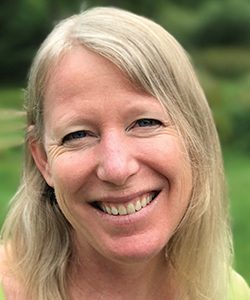Making the Most of University Museums
 As director of Tufts University’s Emotion, Brain, & Behavior Laboratory, Heather Urry offers courses ranging from introduction to psychology to affective neuroscience. But until last year, she never imagined incorporating an art museum into her instructional repertoire.
As director of Tufts University’s Emotion, Brain, & Behavior Laboratory, Heather Urry offers courses ranging from introduction to psychology to affective neuroscience. But until last year, she never imagined incorporating an art museum into her instructional repertoire.
Urry incorporated the Tufts University Art Gallery into a portion of an undergraduate emotion course that focused on coding facial movements — a step that has drawn praise from her students in their end-of-semester course evaluations.
“In the past when I’ve taught this content, my lecture slides illustrated with pictures how the action units in the face map onto different expressions of emotion,” Urry explained. “I invited questions and did my best in this lecture-oriented setting to invite participation in many different ways, but it was ultimately a relatively passive process. This opportunity in the gallery was really a good way to make it much more active.”
US colleges and universities are home to more than 700 art museums and galleries, many of which are increasingly reaching out to psychological scientists like Urry for collaborative instruction.
College museums are meant to be used for teaching, and not just for art history classes. Along with curatorial staff, many university museums and galleries have staff that specialize in academic programs, education, or staff who specifically work with faculty and students to develop interdisciplinary curricula.
“I think most academic museums, if approached, would be thrilled to try something with a faculty member,” says Liz Canter, the Gallery Educator & Academic Programs Coordinator at Tufts. “If a faculty member already has the initiative and wants to come, I can’t imagine any museum educator saying that they’re not willing to help.”
Tufts’ gallery can be particularly useful when science faculty are focusing on a specific skill set, Canter explains. For an engineering class, it might be pattern recognition; for medical students, it might be visual-observation proficiency. For psychology students learning about the science of emotions, the gallery was an ideal hands-on teaching tool for facial coding techniques.
The resource for Urry’s project was an exhibit that opened at the gallery in the fall of 2016. The exhibit included more than 90 portraits spanning over 150 years of art history. As part of her job of encouraging faculty and students to make use of the gallery’s resources, Canter was scouring a course catalog for classes that that could utilize the exhibit. That’s when she spotted Urry’s survey-level psychology course on emotions.
“We have this room of faces and she teaches a class about emotions,” Canter explained. It seemed like an ideal match, but getting faculty to incorporate the museum into their curricula “can be like pulling teeth,” she said.
When Canter first approached her about using the museum for her class, Urry wasn’t sure how a museum visit would improve her course; it also seemed time-intensive. But she was intrigued enough to set up a meeting; by the end of that meeting, she was convinced that it was worth a try.
Canter worked with Urry to put together a lesson on applying the Facial Action Coding System (FACS) for measuring the “action units” in the face that contribute to expressions of emotion. Based on work by APS William James Fellow Paul Ekman, FACS is one of best-known systems for classifying emotions based on specific movements of the muscles of the face.
In one class, Urry gave a typical lecture about emotion expressions and FACS. During the next class, the students met at the gallery, where they could try their hand at coding the action units of different portraits in the exhibit.
“Everyone coded one piece in common, and we ended with a discussion of that piece to determine whether we could come to consensus about the action units therein and the emotion being expressed,” Urry explained. “This culminated in a discussion of the strengths and limitations of the FACS coding approach.”
The experience led the students to dive into an involved conversation about the benefits and obstacles inherent in any coding scheme, including the fact that there were disparities of context to each art piece, just as there are for people in the real world.
“The idea of using this content to teach a skill is really fantastic,” Urry said. “I think another benefit is that I can teach this content in a way that is so much more interesting, motivating, and exciting. Ultimately, when students are excited about what we’re doing, they’re going to be invested in the process and better able to retain the critical features of that skill.”
Canter added, “That’s kind of how most classes end up working. We work backwards from a discrete skill, often a skill that an instructor is having trouble teaching in the traditional classroom. Maybe there’s a creative way to get at it from another angle in another space.”
But I Don’t Have Time…
Urry emphasizes that working the museum into her lesson didn’t require a big time commitment.
In addition, looking at the material with a fresh perspective actually provided a sense of inspiration.
“It was not just motivating and interesting for the students, but it was also motivating for me,” she said.
Canter emphasizes that the museum shouldn’t take time and resources away from the content you’re trying to teach and that it shouldn’t be thought of as “just a field trip.”
“A lot of what I hear from people is that they have too much content to distill and they think this will take away from their classroom time or become more work for them,” Canter explains. “Sometimes they’ve been teaching the same syllabus for 15 years and they haven’t really changed it. You’re still teaching that content, just somewhere else.”




